150 Constituents
Vladimir Propp counted the number of constituents all fairy tales are built from and came to 150.
31 Functions of Fairytale
Vladimir Propp counted 31 functions of a fairytale. Propp defines’ function’ as an act of a character, understood fromt he point of view of its significance for the course of the action.
Propp’s method is the most famous way of conceptualising the constituent elements of fairytales.
See: Propp, Vladimir . (1928) 1968. Morphology of the Folktale, translated by Laurence Scott . Austin: U Texas P.
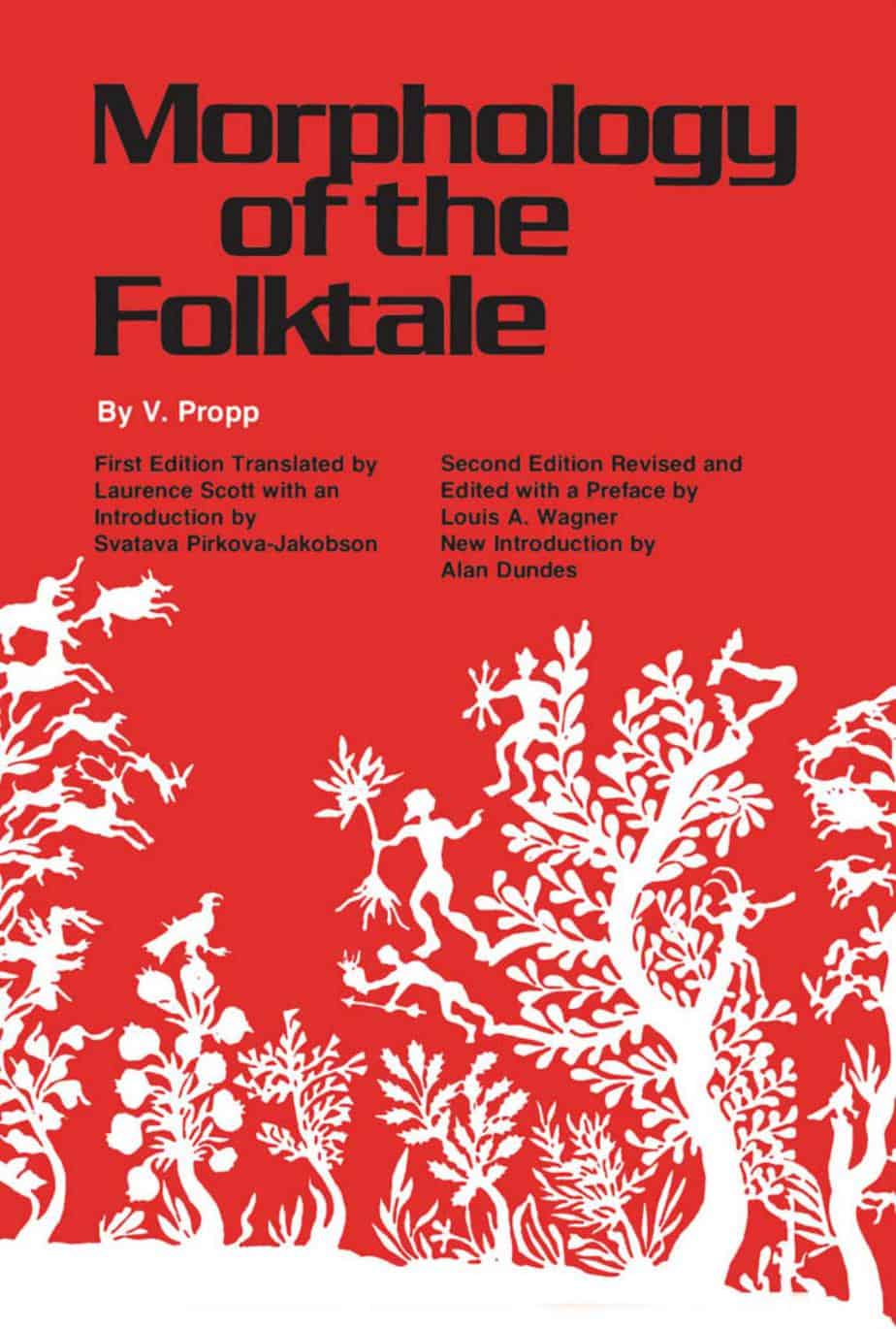
Morphology will in all probability be regarded by future generations as one of the major theoretical breakthroughs in the field of folklore in the twentieth century. — Alan Dundes. Propp’s work is seminal…[and], now that it is available in a new edition, should be even more valuable to folklorists who are directing their attention to the form of the folktale, especially to those structural characteristics which are common to many entries coming from even different cultures.
Advantages of the Propp classification system:
- It is relatively concrete
- Avoids weird combinations of different levels and forms of motif
Aarne–Thompson–Uther Index
An index of fairytales by type ,originally composed in German by Finnish folklorist Antti Aarne in 1910, expanded by American Stith Thompson (1928, 1961) and developed further by German folklorist Hans-Jörg Uther (2004).
The index organizes about 2,500 tale types under different categories, not only fairy tales (the latter identified as tales of magic; ATU numbers 300–749), but also animal tales, religious tales, realistic tales, anecdotes, jokes, and other folktales.
This system has its problems. One problem is that stories that share motifs and other significant elements may not be classified together under the same tale type. Also, every oral storyteller tells a slightly different tale, and no categorisation can possibly catch all of these as oral storytelelrs often combine tale types or render them otherwise unclassifyable.
Our story is never written in isolation. We do not act in a one-man play. We can do nothing that does not affect other people, no matter how loudly we say, “It’s my own business.”
Madeleine L’Engle, Walking on Water: Reflections on Faith and Art
Allusion
Drawing on the work of Gerard Genette, Paul Smith identfied eight categories of intertextual use of fairytales in modern fiction for a mass audience.
The fourth of these types is the ‘allusion’, with implicit reference to a fairytale within the text (cf. incoroporation).
Andrew Lang
Born in Selkirk. Died at Banchory (1844 – 1912). Scottish writer and Journalist. Lang’s output was enormous and varied over many subjects from fairytales to anthropology and Greek literature. Importantly for fairytale study, Andrew Lang was the editor of well-known collections of fairytales, notably the ones with a colour in the title.
The Blue Fairy Book (1921)
The Red Fairy Book (1907)
The Green Fairy Book (1906)
The Grey Fairy Book (1905)
The Yellow Fairy Book (1906
The Pink Fairy Book (1904)
The Lilac Fairy Book (1910)
The Crimson Fairy Book
Also:
The True Story Book
The Red True Story Book
The Animal Story Book
The Red Book of Animal Stories
The Arabian Nights Entertainments
The Book of Romance
The Blue Poetry Book
and more
Architextual or Chronotopic
Drawing on the work of Gerard Genette, Paul Smith identfied eight categories of intertextual use of fairytales in modern fiction for a mass audience.
The final category is the architextural or chronotopic fairytale, with a ‘fairytale’ setting or environment.
Archetype
Although you probably understand and use this word, it’s ultimately a vague term. The concept of the archetype includes different levels and forms, comprises emblematic characters, acts, or situations often presumed to represent aspects of human nature.
Jungian scholars use the word archetypt to suggest how important fairytales are as representations of our psyche. They talk about shadow, anima and animus which are found across various tales.
One Freudian scholar is Marie-Louise von Franz.
[The archetype] is not only an ‘elementary thought’ but also an elementary poetical image and fantasy, and an elementary emotion, and even an elementary impulse toward some typical action.
von Franz, Marie-Louise . 1996. The Interpretation of Fairy Tales. Boston: Shambhala. 8)
To von Franz, fairytale archetypes mirror the basic patterns of the psyche.
Authorised Tale
Drawing on the work of Gerard Genette, Paul Smith identfied eight categories of intertextual use of fairytales in modern fiction for a mass audience.
The first of these categories is the authorised tale, in which there is ‘explicit reference to a fairytale in the title’.
Beast tale
A prose or verse narrative similar to the beast fable but usually without a moral. So what’s a beast fable, then?
Animal characters are given human attributes with human feelings and motives. These tales have a moral. If you’re familiar with Aesop’s fables you’ll know what a beast fable is.
Birch
Certain trees crop up more frequently than others in fairytale. Fairytales featuring birch: “The Wonderful Birch”, “Aschenputtel”, “Katie Woodencloak”, “The Story of Tam and Cam”, “Ye Xian”, “Cap O’ Rushes”, “Catskin”, “Fair, Brown and Trembling”, “Finette Cendron”, “Allerleirauh”, and “Tattercoats”. Birch trees have thin, peeling bark.
Character archetype

Vladamir Propp categorised the dramatis personae of fairytales into 8 groups:
- The Hero (either Seekers or Victim-heroes)
- The Helper (appears at critical moments to provide support; the ally)
- The Villain (morally juxtaposed against the goodness of the hero)
- The False Hero (tries to get the glory; is a variation on the villain)
- The Donor (the character who gives the hero a magical aid)
- The Dispatcher (the character who sends the hero out on their mission)
- The Princess (she’s either the oibjectified reason for the quest or the reward)
- The Princess’s Father (may double as the Dispatcher; his job is to keep guard of the Princess)
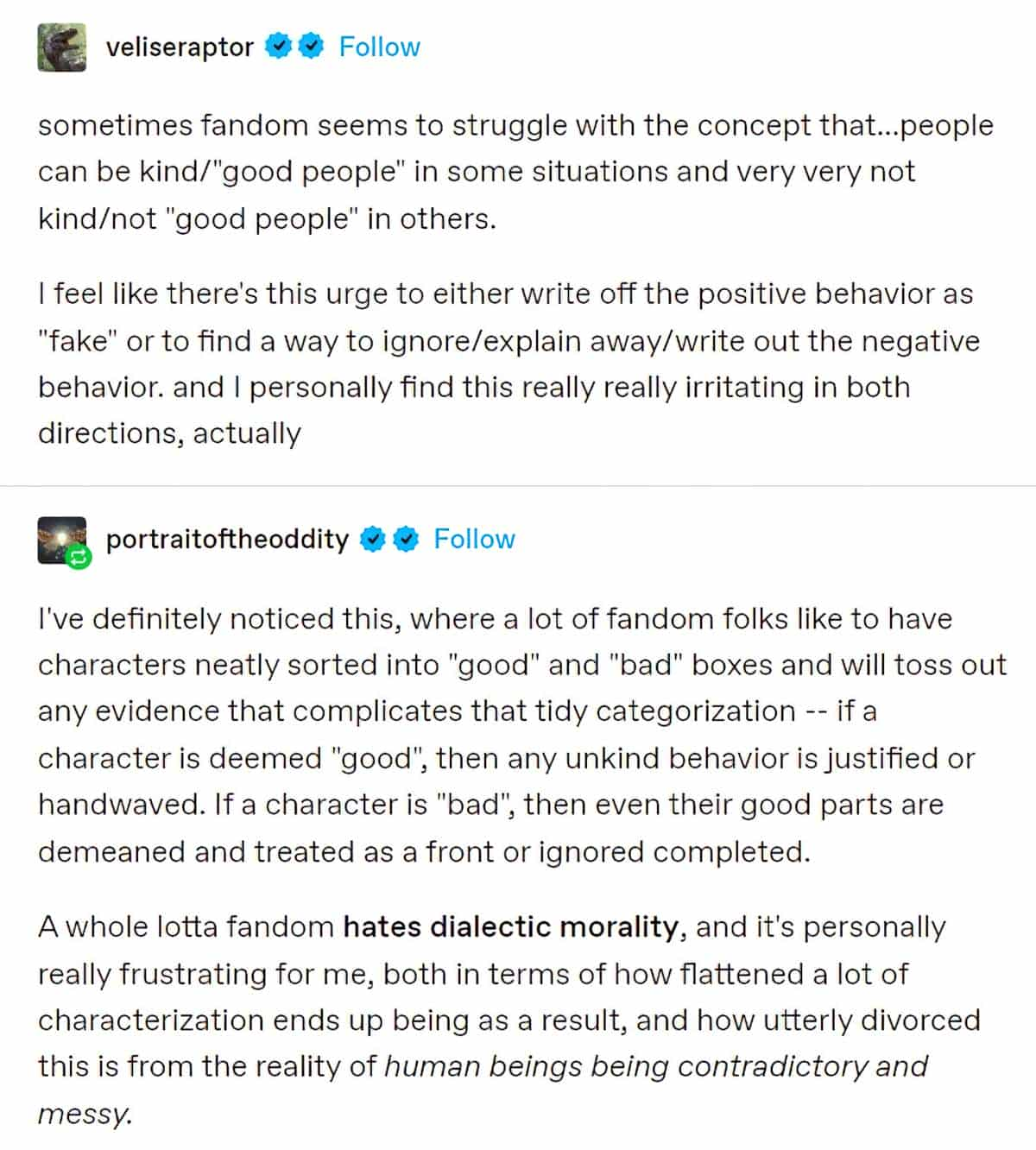
Damsel
The ‘damsel in distress’ is an outdated trope in line with Vladmir Propp’s Princess archetype. (However, the trope lives on in computer games.)
The damsel trope is a profoundly powerful representation of weakness. We authors must be wary of who appears weak or victimized in our books, as the message this sends can detrimentally impact an audience’s sense of self-worth.
The Heroine’s Journey by Gail Carringer
Disney
Disney has reproduced numerous fairytales for modern audiences and changed our conception of important tales.
Zipes applies Augustin Eugène Scribe’s concept of the “well-made” (theatrical) play to Disney films. The six elements employed by dramatists in creating effective drama:
- traumatic and unfortunate incidents
- songs of woe and joy
- banishment and isolation
- quest, conflicts, and comic relief
- peripeteia (sudden reversal of fortune)
- miraculous resolution
See: Zipes, Jack . 2016. “The Great Cultural Tsunami of Fairy-Tale Films.” In Fairy-Tale Films Beyond Disney: International Perspectives, edited by Jack Zipes , Pauline Greenhill , and Kendra Magnus-Johnston , 1–17. New York: Routledge.
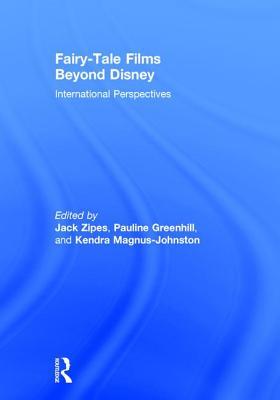
The fairy tale has become one of the dominant cultural forms and genres internationally, thanks in large part to its many manifestations on screen. Yet the history and relevance of the fairy-tale film have largely been neglected. In this follow-up to Jack Zipes’ book The Enchanted Screen (2011), Fairy-Tale Films Beyond Disney is a multinational, multidisciplinary exploration of fairy-tale cinema. Bringing together twenty-three of the world’s top fairy-tale scholars to analyze the enormous scope of these films, Zipes and colleagues Pauline Greenhill and Kendra Magnus-Johnston present perspectives on film from every part of the globe, from Hayao Miyazaki’s Spirited Away, to Jan Svankmajer’s Alice, to the transnational adaptations of 1001 Nights and Hans Christian Andersen.
Dragon
The dragon is most often the villain which the hero must overcome, more popular in some cultures than in others. East Asian tales feature many dragons.
Dwarf
Dwarves feature heavily in fairytales, but our modern concept of dwarves has been largely shaped by Disney. In contrast to Walt Disney, Lord of the Rings author (and Hobbit creator) J.R.R. Tolkien was a professor, scholar and lifelong student of classical literature, history and mythology. Tolkien’s depictions of dwarves was influenced by Germanic and Nordic myths. He considered Disney’s revisioning of dwarves in Snow White a kind of crude slapstick, and a “cheapening of ancient cultural artifacts“.
Because dwarves often have a very specific interest in fiction, modern audiences sometimes code them as autistic. They are very often skilled engineers and artisans.
They are also often coded as all-male species, even when their maleness is not described on the page.
Elf
A mischievous fairy. The ‘elves’ in a tale such as “The Elves and the Shoemaker” are actually a type of hobgoblin (goblins who come into your house and perform tasks or carry out mischief). The names of the various fairies overlap and intersect when fairytales are translated and passed down.
Enchantment
To ‘enchant’ means to cast a spell over something or someone.
In fairy tales, characters alternate between states of enchantment and disenchantment. Symbols and tropes indicate which state a fairytale character happens to be in at any given time.
For instance, if a heroine on the cusp of puberty is
- wearing a ragged fur or skin
- abducted by lunar creatures (dragons, werewolves etc.)
- transmogrified into a snake (etc.)
she is in a state of enchantment. She can disenchant herself by:
- shucking off her ragged fur
- escaping from the dragon’s lair
- turning back into a human and having penetrative sex with a man.
- Less intrusively, she might also comb or brush the tangles out of her dishevelled hair.
Environment
Fairy tales reflect their environment: The conditions under which they were created and evolved. It’s impossible to grasp fairy tales unless we think about the environmental circumstances which brought them into being.
Fable
A short story with a clear moral.
Fabulation
Drawing on the work of Gerard Genette, Paul Smith identfied eight categories of intertextual use of fairytales in modern fiction for a mass audience.
The sixth of these types is fabulation, referring to the crafting of an original fairytale.
Fairy
Why aren’t there actual fairies in so-called ‘fairytales’? You may be thinking of the Tinkerbelle type of fairy. But fairies more broadly refer to any creature, good or evil (or morally grey) which inhabits the nooks and crannies of our world and imagination. J. R. R. Tolkien wrote a famous essay called “On Fairy-Stories”. He defined fairy tales as stories about the adventures of men in Faërie, the land of fairies. This fairytale setting includes many magical species and marvels.
Fairy godmother
A common type of donor or mentor. The fairy godmother will appear and give the main character advice or magical aids to help them in their quest.
Folklore
Fairytales are a subset of folktales and folk lore. The difference is, fairytales include fantasy. Think of ‘faery’ as a place or a state, which was its original use. A fairytale is set in this parallel fantasy world.
Folktale
Folk narratives include traditional fairytales. Folk tales tend to be subversive, though the myths which inform them are not.
A folktale is the ‘generic’ tale that is used for all the tales/puns/jokes etc that can be lumped together, garnered from the oral tradition. Folk narratives reflect the societies and individuals which create and transmit them. They are therefore as diverse as humans are diverse.
Folklore includes superstitions/remedies/old wives’ tales. There are various categories of folk tales:
- Folktales include many beast stories.
- The character archetypes of Fools and Innocents often feature: Jack and the Beanstalk, [Simple Simon], Brer Rabbit, Anansi (a spider in African lore)
- Folktales also include Pourquoi Stories: how and why things happen. [pourquoi means ‘why’ in French]
Folk narratives have to be re-created with each telling.
Folk songs — “Happy Birthday To You” and “He’s A Jolly Good Fellow” are examples of folk songs. In Australia many folksongs derive from military songs. For example Melbourne’s Grand Old Flag is taken from an American song. Collingwood Forever was a marching song from the Boer War. Many folk songs are a cultural marker, used to help define a particular group because they derive from a shared history. The Brothers Grimm collected a huge number of stories particularly from the Germanic countries. (There was no country called ‘Germany’ back then. There were lots of separate Germanic states and each state was a separate country.) The Grimm brothers were trying to bring these groups together with a shared culture. Eventually they came together as Germany.
Fox
Foxes can often talk in fairytales. They are most often trickster archetypes.
GENOTYPE
Plot genotypes are the compositional schemas of particular stories. They are sets of instructions, written in the language of the plot function, for executing particular plots. […]
In evolutionary biology, the genotype refers to the inherited instructions an organism carries within its genetic code; these instructions may be used to understand how a particular organism is specialized within the group to which it belongs. By extension, the plot genotype represents the functional structure or compositional schema of a particular fairytale.
Terence Patrick Murphy, 2015. From Fairy Tale to Film Screenplay: Working with Plot Genotypes. Basingstoke: Palgrave Macmillan.
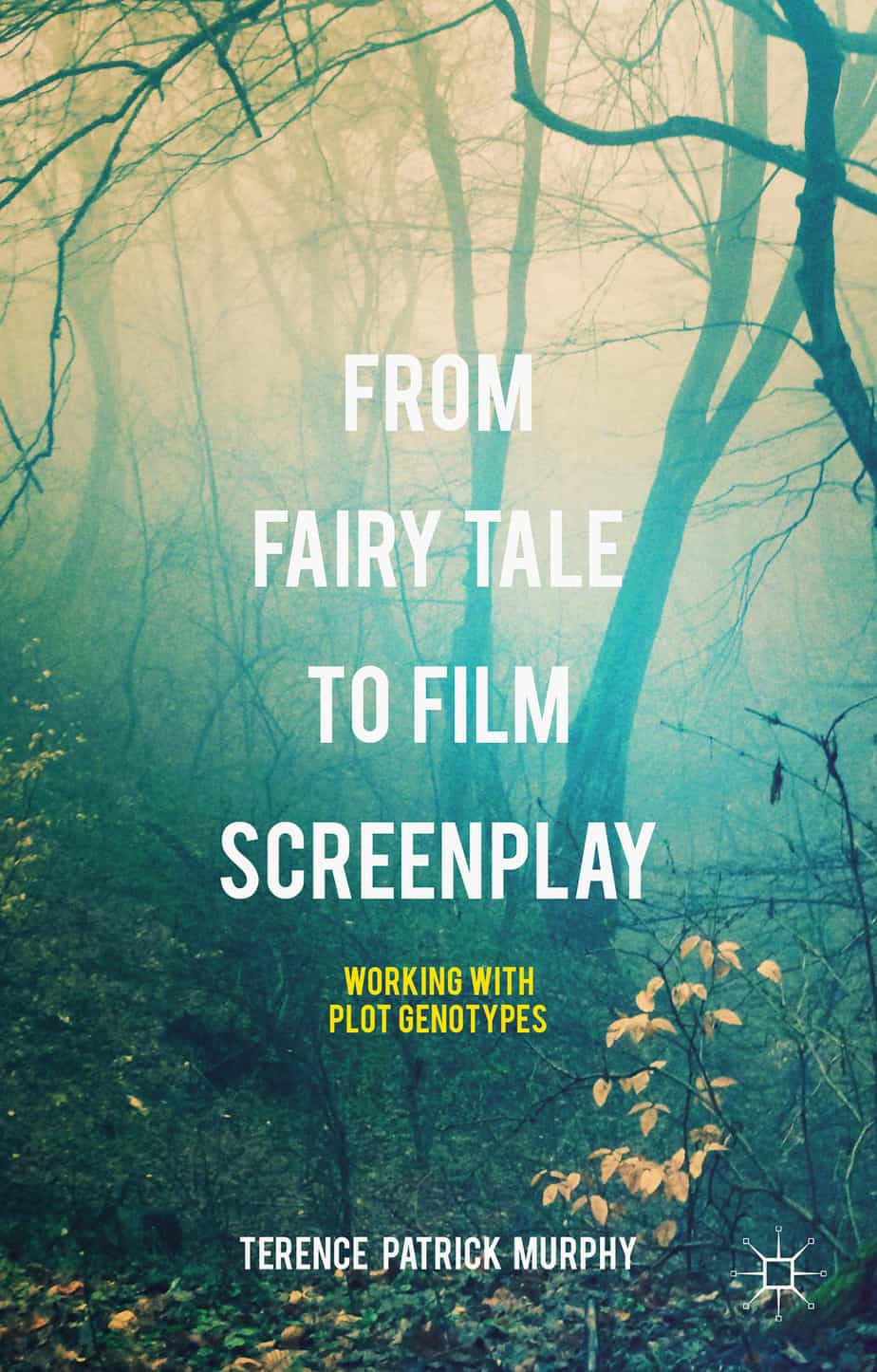
In Screenplay: The Foundations of Screenwriting (1979), Syd Field first popularized the Three-Act Paradigm of Setup, Confrontation and Resolution for conceptualizing and creating the Hollywood screenplay. Field did the Hollywood film industry an enormous service. Nonetheless, although he handles the issue of overall structure expertly, Field falls down when offering the screenwriter advice on how to successfully build each of the three individual Acts. This is because Field did not recognize the importance of another layer of analysis that underpins the existence of plot points. This is the level of the plot genotype.
Murphy is one critic of Vladimir Propp’s view that all fairytales comprise 31 elements in the same order (if they appear at all).
Giant
A large opponent. Giants are distinguished from ogres in that ogres will eat you. (Both are large and formidable.) Giants are often stupid and can be overcome with wit and trickery.
Glass
Glass makes an appearance in various fairytales, notably the glass slipper of Cinderella and the Glass Mountain of another type of fairytale.
Gnome
A legendary dwarfish creature supposed to guard the earth’s treasures underground.
GRIMM BROTHERS
You probably already know the story of Snow White—as well as Little Red Riding Hood, Briar Rose, The Frog Prince, and so many others. These tales have a rich history of oral storytelling. They’ve travelled through culture, adapted and readapted in each retelling and reaching as far as the popular Disney movies that our kids watch over and over. Jacob and Wilhelm Grimm saw the power of this folklore and made it their life’s mission to compile and preserve it. But while we tend to think of Grimms’ Fairy Tales as stories for children, the themes found in Jacob and Wilhelm’s book can be pretty mature…and a little dark. Columbia professor Annie Pfeifer discusses how the Grimm brothers ended up creating a whole new literary genre and their stories have been shaped and molded throughout history.
Annie Pfeifer is an Assistant Professor of Germanic Languages at Columbia University. She has published articles in The New German Critique, German Life and Letters, and the peer-reviewed volumes Que(e)rying Consent and Iran and the West and edited a collection of essays titled “Walk I absolutely Must” in 2019. See more information on our website, WritLarge.fm.
New Books Network
Hans Christian Andersen
A Danish author, Hans Christian Andersen (1805-1875) is remembered for his fairy stories.
Happy ending
Most fairy tales are full of darkness and violence, and as often as not do not end happily. Fairytales were not always considered for children. However, when bowdlerised for children, more of them end on a hopeful, happy note (often in marriage).
Hero
a main character who fights for a cause
Heroine
The main good female character in a work of fiction. Note that heroine is not simply the femme presenting equivalent of a hero. A heroine is simply ‘good’ (passive) whereas a hero is expected to fight for a cause.
Hypertext and Hypotext
These are terms from semiotics and some people find them useful when thinking about fairytales.
Hypertextuality refers to any relationship uniting a text B (which I shall call the hypertext) to an earlier text A (I shall, of course, call it the hypotext), upon which it is grafted in a manner that is not that of commentary
Genette, Gérard . 1997. Palimpsests: Literature in the Second Degree. Lincoln: U Nebraska P.
Incorporation
Drawing on the work of Gerard Genette, Paul Smith identfied eight categories of intertextual use of fairytales in modern fiction for a mass audience.
The third of these is ‘incorporation, a tale with explicit reference to a fairytale within the text.
Journey
In fairytales with Seeker heroes, these main characters set out on a journey because they lack something, though what they lack may not be on the page.
King
The king fairytale archetype maps onto the father archetype.
Forest
In fairytale, the forest represents the subconscious.
Legend
A legend is usually about a single person (sometimes groups), but focuses on the lives of individual people. These people might not be real. Robin Hood, Joan of Arc, Ulysses are all characters who make certain groups proud to be a part of that group. In Australia we have The Man From Snowy River and similar, which perpetuates a particular image of Australia. Legends can be misused. (See: The Nazis.) [See again, Deconstructing The Hero by Marjery Hourihan.]
Lore
knowledge gained through tradition or anecdote
Magic
any art that invokes supernatural powers
Marriage
Anthropologist Bengt Holbek (1987) argues that fairy tales by definition, unlike other forms of folktales, always end with a marriage.
For him, fairytales are about the progress of young characters (female or male; low or high status) into adulthood via a series of specific moves, including leaving home, sharing (illicit) love, separation and/or trial of the protagonists, and a resolution in matrimony and maturity.
See: Interpretation of Fairy Tales: Danish Folklore in a European Perspective. Helsinki: Suomalainen Tiedeakatemia.
Holbek has a weirdly gender binary obsession with fairytales, classifying them into masculine and feminine types. This is based on the gender manifestation of the main characters. For example, Holbek designates “Bluebeard” as a masculine tale as it appears to be about a male character (Bluebeard). This erases the fact that the story is about the very specific female experience of being married off into another family and removed from the natal home.
He argues what many gatekeepers of children’s literature often parrot about the reading habits of children: Men read fairytales about men whereas women will read fairytales about men and women with equal interest.
Metafictional
Drawing on the work of Gerard Genette, Paul Smith identfied eight categories of intertextual use of fairytales in modern fiction for a mass audience.
The seventh category is ‘metafictional,’ described as ‘discussion of fairytales’.
Mother Goose
The imaginary author of a collection of nursery rhymes
Meme
Jack Zipes uses the term meme to talk about fairy-tale dissemination. This work draws upon a concept described by Richard Dawkins in his 1976 book The Selfish Gene.
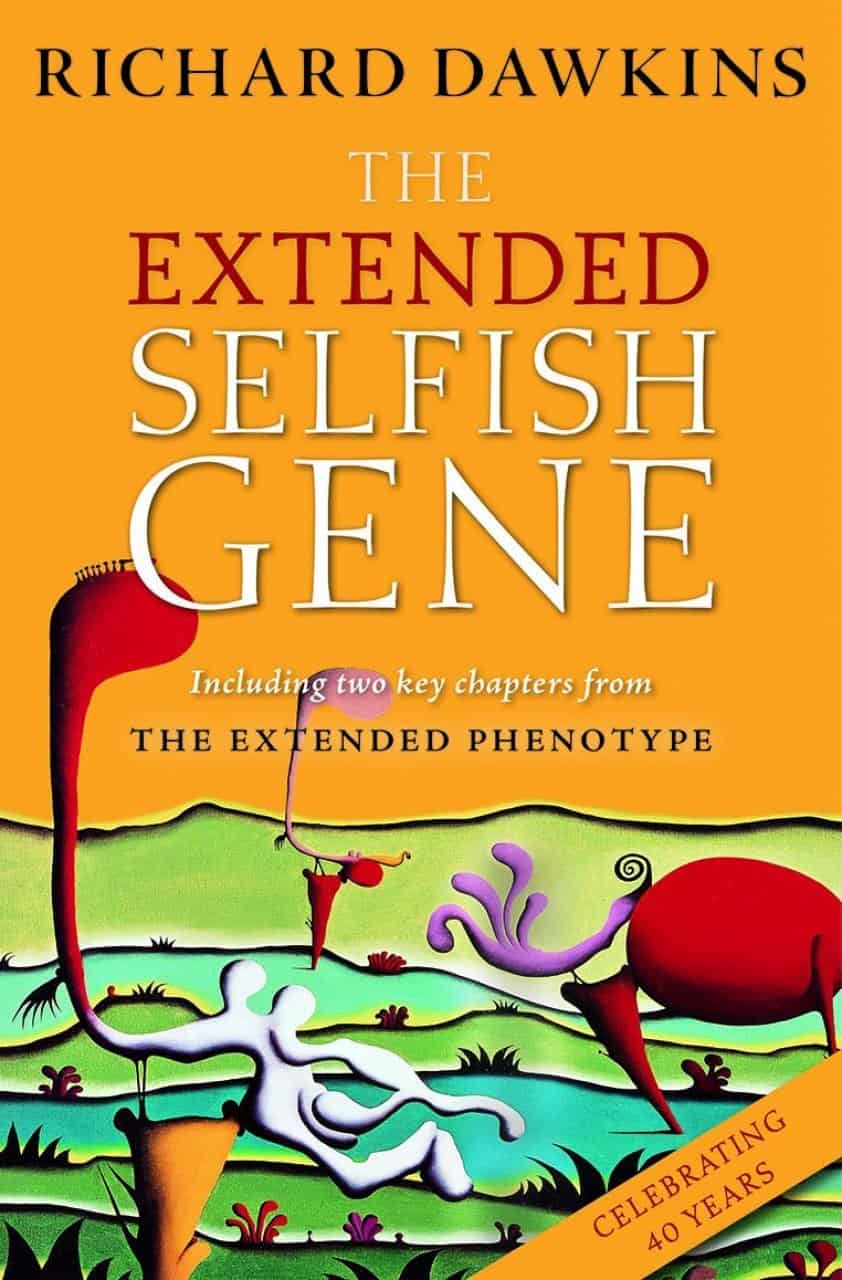
Inheriting the mantle of revolutionary biologist from Darwin, Watson, and Crick, Richard Dawkins forced an enormous change in the way we see ourselves and the world with the publication of The Selfish Gene. Suppose, instead of thinking about organisms using genes to reproduce themselves, as we had since Mendel’s work was rediscovered, we turn it around and imagine that “our” genes build and maintain us in order to make more genes. That simple reversal seems to answer many puzzlers which had stumped scientists for years, and we haven’t thought of evolution in the same way since. Drawing fascinating examples from every field of biology, he paved the way for a serious re-evaluation of evolution. He also introduced the concept of self-reproducing ideas, or memes, which (seemingly) use humans exclusively for their propagation. If we are puppets, he says, at least we can try to understand our strings.
In a 2006 book, Zipes explained how memes relate to fairytales, describing the meme as:
an information pattern contained in a human brain (or in artifacts such as books or pictures) and stored in its memory, capable of being copied to another individual’s brain that will store it and replicate it.
Zipes, Jack . 2006. Why Fairy Tales Stick: The Evolution and Relevance of a Genre. New York: Routledge.
It’s quite often the case that storytellers don’t realise the links between their own story and ancient fairytales until after they’re made, in which case commentators, reviewers and members of the movie-viewing public may point out that, say, the film Hard Candy (2005) is a Little Red Riding Hood Tale (even though the makers of that film — specifically David Slade — didn’t consciously make a Little Red Riding Hood re-visioning.
That, argues Zipes, happens to storytellers and their tales because fairytales are memes — bits of story which stick in people’s minds and replicate themselves across generations.
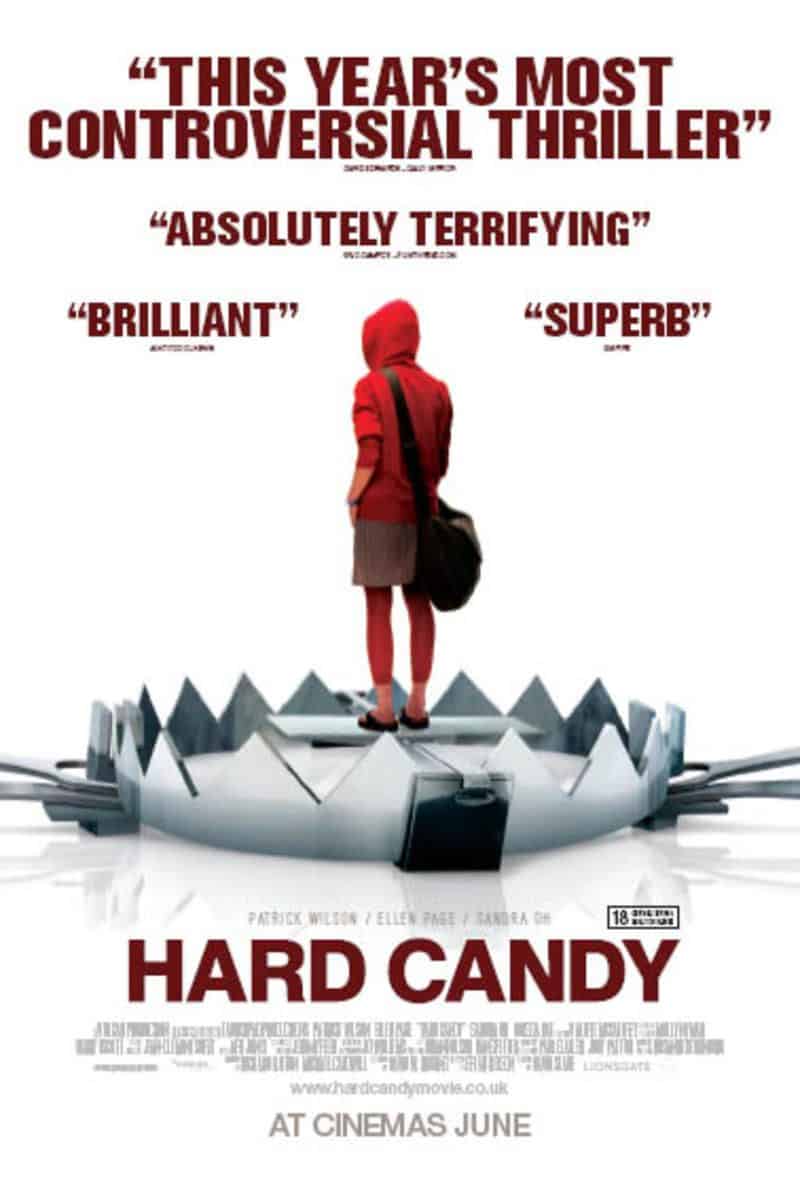
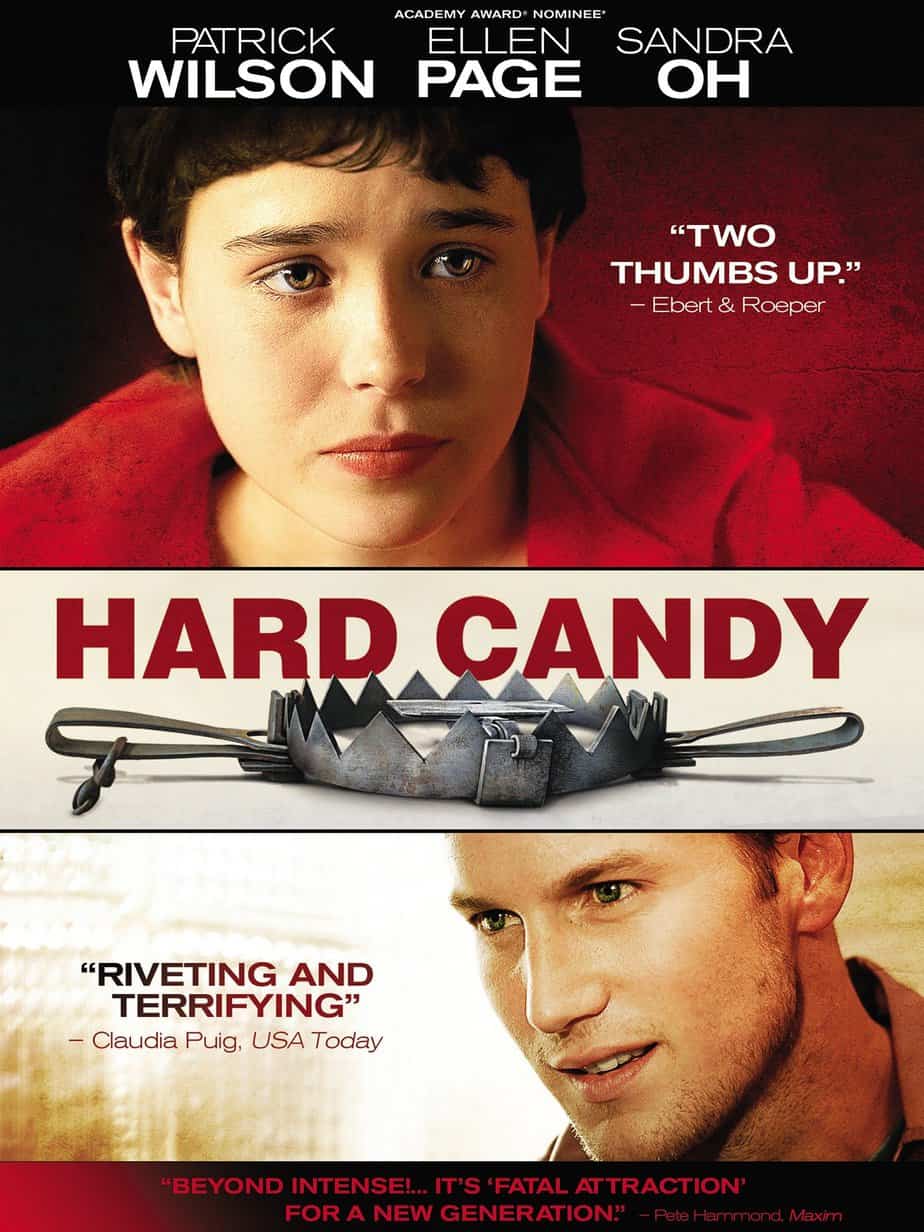
Zipes is very clear about one common misconception: Not all fairy tales actually are memes. Only those which have grabbed the popular imagination count as memes.
Talking about stories as memes comes uncomfortably close to talking about viruses as living things with volition of their own according to some critics, notably Ruth B. Bottigheimer.
See: Bottigheimer, Ruth B. 2009. “Why Fairy Tales Stick: The Evolution and Relevance of a Genre (Review).” Journal of American Folklore 122 (485): 367–370.
Magic Mirrors
In Postmodern Fairy Tales , Cristina Bacchilega states that the fairy tale dominant metaphor is the magic mirror ,‘because it conflates mimesis (reflection), refraction (varying desires), and framing (artifice)’ […] In her interpretations of postmodern tales of magic, Bacchilega focuses on how they reproduce these mirror images while at the same time they make the mirroring visible to the point of transforming its effects.
Aurora Piñeiro
Motif
A recurrent element in a literary or artistic work. Fairytales are commonly grouped according to ATU tale types, but one of the less systematic modes for describing folktale elements (and thus traditional, oral fairy tales) is by motif.
Stith Thompson, who developed the Motif-Index of Folk-Literature (1932–1935; revised in 1955), saw motifs as recurring characters, locales, occurrences, and actions:
“worthy of note because of something out of the ordinary, something of sufficiently striking character to become a part of tradition, oral or literary”
Thompson, Stith. (1932–1935) 1955. Motif-Index of Folk-Literature: A Classification of Narrative Elements in Folktales, Ballads, Myths, Fables, Mediaeval Romances, Exempla, Fabliaux, Jest-Books, and Local Legends. Bloomington: Indiana UP. 19.
Fairytale motifs as classified by this system are extremely diverse little chunks of story:
- Association of cow and tiger: tiger eats cow as soon as she is hungry
- Destruction of enemy’s weapons
- Retorts concerning debts
Myth
A myth is a story that explains the world. Many derive from early religions because they were the best explanation people could come up with at the time, with the evidence they had. These are not for entertainment, originally made up to explain how the world came about. Myths and legends all derive from reality and all function to explain the world to a particular culture. Related: What Is Mythic Structure?
Myths are usually thought to be sacred and true whereas legends are usually thought to be secular, with questioned truth claims. (Folktales are usually thought to be secular and fictional.)
Nursery rhyme
Until recently (perhaps), nursery rhymes were often a child’s first experience of literature. There are now nursery rhymes which have been ‘authored’ but many are passed down between generations with no known origin, like fairytales. (We know who wrote Twinkle Twinkle Little Star.) Nursery rhymes are a mish-mish of the created, adapted, the melodied. They exist for the purpose of play, and are helpful with babies’ language development.
Ogre
An ogre is a giant who also eats people. The defining feature of an ogre (apart from size) is his appetite.
Once upon a time
Fairytales open in a way that link their audience to the remote past. Various languages have various means of doing this; in English we say ‘Once upon a time’, or ‘Once’.
Parable
A simple story used to illustrate a moral or spiritual lesson.
Parent-senders
Parents who take their children into the wilderness and leave them there are known as Parent-senders. The father in “Hansel and Gretel” is one example.
Picaresque
An episodic shape of story about the adventures of a rough and dishonest but appealing hero. See also: Road Trip Stories.
Prince Charming
There’s no Prince Charming per se in Vladamir’s 8 categories of fairytale character archetypes. The Prince Charming might be used by the storyteller as the hero, or he might be the False Hero who charms people but is not worthy of reward. In Jane Austen’s Pride and Prejudice, Wickham is the Prince Charming.
Heartthrobs: A History of Women and Desire
What can a cultural history of the heartthrob teach us about women, desire, and social change? From dreams of Prince Charming or dashing military heroes, to the lure of dark strangers and vampire lovers; from rock stars and rebels to soulmates, dependable family types or simply good companions, female fantasies about men tell us as much about the history of women as about masculine icons. When girls were supposed to be shrinking violets, passionate females risked being seen as “unbridled,” or dangerously out of control. Change came slowly, and young women remained trapped in double-binds. You may have needed a husband in order to survive, but you had to avoid looking like a gold-digger. Sexual desire could be dangerous: a rash guide to making choices. Show attraction too openly and you might be judged “fast” and undesirable. Education and wage-earning brought independence and a widening of cultural horizons. Young women in the early twentieth century showed a sustained appetite for novel-reading, cinema-going, and the dancehall. They sighed over Rudolph Valentino’s screen performances, as tango-dancer, Arab tribesman, or desert lover. Contemporary critics were sniffy about “shop-girl” taste in literature and in men, but as consumers, girls had new clout. In Heartthrobs: A History of Women and Desire (Oxford University Press, 2017), social and cultural historian Carol Dyhouse draws upon literature, cinema, and popular romance to show how the changing position of women has shaped their dreams about men, from Lord Byron in the early nineteenth century to boy-bands in the early twenty-first. Reflecting on the history of women as consumers and on the nature of fantasy, escapism, and “fandom,” she takes us deep into the world of gender and the imagination. A great deal of feminist literature has shown women as objects of the “male gaze”: this book looks at men through the eyes of women.
New Books Network
Puck
The word “puckish” derives from Puck, who in medieval English folklore, was a malicious fairy or demon. In Old and Middle English the word meant simply “demon.” In Elizabethan lore he was a mischievous, brownie-like fairy also called Robin Goodfellow, or Hobgoblin. Puck is familiar to many from Shakespeare’s A Midsummer Night’s Dream.
Religion
Vladamir Propp said that religion (in the broadest sense of the word) is especially important when examining fairy tales. For exmaple, fairy tales are often about the religious concept of ‘the remote past’.
If the same form occurs both in a religious monument and in a fairy tale, the religious form is primary and the fairy-tale form is secondary. This is particularly true of archaic religions. Any archaic religious phenomenon, dead today, is older than its artistic use in a fairytale.
Vladimir Propp
For example, if a serpent appears in a religious story and also in a fairytale, it came from the religious story first.
Re-visioned Fairytale
Drawing on the work of Gerard Genette, Paul Smith identfied eight categories of intertextual use of fairytales in modern fiction for a mass audience. One of those (the fifth) is the re-visioned tale. The re-visioned tale puts a new spin on an old tale.
Ritual Material
Vladimir Propp makes the distinction between religious/epic material (which fairytales draw from) and ritual/cult material.
Religious/epic material: There is direct kinship along descending lines. These stories are like descendents in human families.
Ritual/cult material: We can only talk about parallel kinship. Propp gives the example of Samson and Delilah. There’s both a fairy tale and a biblical text about Samson and Delilah. In this case, both stories may go back to a common source.
Seeker
The folktale hero may be one of two types. Seeker is one; the other is victim-hero.
If a damsel is kidnapped, and her father disappears beyond the horizon and the prince goes off in search of her, then the hero of the tale is the prince (and not the kidnapped damsel).
As suggested by the name, Seekers are all about ‘the search’. In contrast, the Victim-hero isn’t searching; they’re being carried along by events.
Step-mother
Fairytales were originally for all ages. When fairytales started to be marketed at a child audience, there were attempts to make them a bit less frightening. One way fairytales became a bit less frightening (dubious) is by turning mothers into step-mothers. Why less frightening? Because the idea that your birth mother can betray you is more confronting than the idea that your father’s new wife might betray you.
Storyrealm
This is a word used by Young, Katharine Galloway (1987) in her book Taleworlds and Storyrealms: The Phenomenology of Narrative. Dordrecht: Nijhoff. When fairytales open (and close) with specific phrases (e.g. “Once upon a time…”) the reader is told that whatever the other circumstances of the performance context may be, they are about to be told a story (not a lecture, sermon, or conversation). This sets up a number of expectations between teller and listener.
So what’s the difference between Taleworld and Storyrealm, using Young’s terminology? It’s about time.
The time of the Storyrealm is the here and now, the time when the story is being told.
The Taleworld could be the present (and it often is in fairy-tale films), but it need not be, and it is always in some sense radically other than the Storyrealm.
Talebook
A rare word for a story book.
Tale Type
A tale type is a narrative structure presenting a brief plot indicating motifs, settings, characters, and actions shared by a similar group of stories, for example using the ATU (The Types of International Folktales: A Classification and Bibliography, an index published in 2004 by Hans-Jörg Uther).
A tale type is a composite plot synopsis corresponding in exact verbatim detail to no one individual version but at the same time encompassing to some extent all of the extant versions of that folktale.
Dundes (1997, 196)
Taleworld
This is a word used by Young, Katharine Galloway (1987) in her book Taleworlds and Storyrealms: The Phenomenology of Narrative. Dordrecht: Nijhoff.
In contrast to the Storyrealm (the here and now), the Taleworld could be the present (and it often is in fairy-tale films), but it need not be, and it is always in some sense radically other than the Storyrealm.
Talking Objects
Talking objects (also animals) can serve as the ‘donor’ (helper/mentor/provider) in a fairytale, but the bad thing is, the villain may have one, too. The villain might have gained information about your whereabouts from a talking axe or something.
Test
“In mythos and fairy tales, deities and other great spirits test the hearts of humans by showing up in various forms that disguise their divinity. They show up in robes, rags, silver sashes, or with muddy feet. They show up with skin dark as old wood, or in scales made of rose petal, as a frail child, as a lime-yellow old woman, as a man who cannot speak, or as an animal who can. The great powers are testing to see if humans have yet learned to recognize the greatness of soul in all its varying forms.”
Clarissa Pinkola Estés, Women Who Run With the Wolves: Myths and Stories of the Wild Woman Archetype
Texture
Scholars of fairytale sometimes describe the stories in terms of ‘texture’. By ‘texture’, they mean a ‘characteristic, instantly recognisable feel or style […] recognizable in the level of structure and content as much as language’ (Jessica Tiffin, 2009, Marvelous Geometry: Narrative and Metafiction in Modern Fairy Tale. Detroit: Wayne State UP).
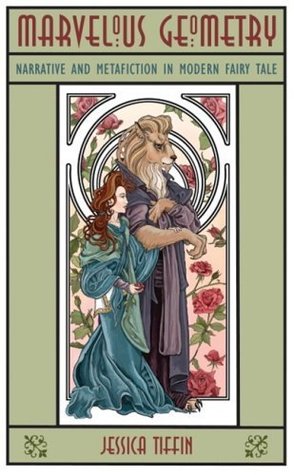
In Marvelous Geometry Jessica Tiffin argues that within 20th- and 21st-century Western literature there exists a diverse body of fairy-tale texts that display a common thread of metafictional self-awareness. The narrative pattern of these texts is self-conscious, overtly structured, variously fantastical, and, Tiffin argues, easily recognized and interpreted by modern audiences. In this broadly comparative study she explores contemporary fairy-tale fictions found in modern literature and live-action and animated film and television to explore fairy tale’s ability to endlessly reinvent itself and the cultural implications of its continued relevance.
Tiffin’s analysis draws on the critical fields of postmodernism, narratological analysis, stucturalism, feminism, and performativity. She considers important fairy-tale retellings such as the feminist revisions of Angela Carter, the postmodern narratives of A. S. Byatt, as well as fairy tales written for children by James Thurber. She also investigates both popular and high-art films, contrasting Cocteau and Neil Jordan to Hollywood romances and Disney, and analyzes the differences between animated features and live-action productions. Finally, Tiffin uses a case study of the recent successful Shrek films to situate the fairy tale in the twenty-first century as an endlessly adaptable folk narrative that self-consciously and affectionately reflects generic structures and significant cultural assumptions.
Tower
Symbolically, the tower is similar to the well. Both are round structures associated with women and girls on the cusp of marriage, pregnancy and childbirth.
Towers are often used in fairytale in place of an interdiction. (If you lock your daughter in a tower, you don’t really need to give her warnings; it’s not like you expect her to go anywhere.)
Troll
a dwarf or giant in Scandinavian folklore inhabiting caves or hills.
ur-Story
The prefix ur- means primitive, original, or earliest. If you put ur- in front of something you’re donating that someone or something embodies the basic or intrinsic qualities of a class or type.
Victim-Hero
The folktale hero may be one of two types. Seeker is one; the other is victim-hero.
Whereas a seeker goes off to rescue someone else who is passive within the story (e.g. a damsel in distress), a victim-hero is the star of their own fairytale. There is no seeker in a story which centers the victim-hero.
As suggested by the name, Seekers are all about ‘the search’. In contrast, the Victim-hero isn’t searching; they’re being carried along by events. Victim-heroes are the main characters of melodrama.
Vladimir Propp
Using the Aarne-Thompson index of fairytales, Propp proposed that all fairytales share the same plot points in the same order, though not every single one. Theorists have since expanded upon and modified these 31 functions of fairytale, arguing that some stories aren’t built like this but we should still consider them fairytale.
Well
Symbolically, the well and the tower are linked. Both are round, enclosed structures. Both are to do with female coming-of-age, in which “coming-of-age” means menarche, marriage and childbirth.
Writerly Fairytale
Drawing on the work of Gerard Genette, Paul Smith identfied eight categories of intertextual use of fairytales in modern fiction for a mass audience.
The second of these is the writerly tale, with implicit reference to a fairytale in the title (cf. authorised fairytale).
FURTHER READING
THE FAIRY TALLERS: A JOURNEY INTO THE SECRET HISTORY OF FAIRY TALES
In The Fairy Tellers: A Journey into the Secret History of Fairy Tales (John Murray, 2022), Nick Jubber unearths the lives of the dreamers who made our most beloved fairy tales: inventors, thieves, rebels and forgotten geniuses who gave us classic tales such as ‘Cinderella’, ‘Hansel and Gretel’, ‘Beauty and the Beast’ and ‘Baba Yaga’. From the Middle Ages to the birth of modern children’s literature, they include a German apothecary’s daughter, a Syrian youth running away from a career in the souk and a Russian dissident embroiled in a plot to kill the tsar. Following these and other unlikely protagonists, the book travels from the steaming cities of Italy and the Levant, under the dark branches of the Black Forest, deep into the tundra of Siberia and across the snowy fells of Lapland.
“This is how the history of fairy tales operates: stories splintering along zigzagging pathways, carrying long-sounding echoes that turn down narrative alleyways suggested elsewhere or replicate each other with astonishing exactitude.”
In the process, Jubber discovers fresh perspectives on some of our most frequently told stories. Filled with adventure, tragedy and real-world magic, this bewitching book uncovers the stranger lives behind the strangest of tales.
New Books Network
